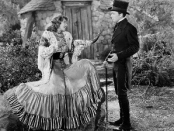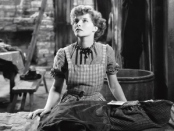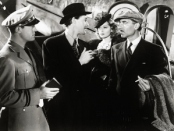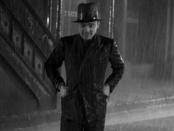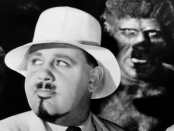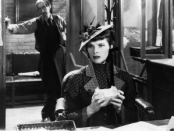[6] A reckless west coast flyboy (Clark Gable) is forced to make an emergency landing in Kansas where he meets and falls in love with a farm girl (Myrna Loy). Test Pilot starts out a screwball comedy and disintegrates into a predictable weepy. But despite the tonal shift, this movie features very good performances from its three stars. Gable shows uncharacteristic but welcome vulnerability, while …
1930’s
[2] This laughably bad melodrama is based on a Eugene O’Neill stage play about a woman who cheats on her mentally ill husband in order to have a kid who won’t end up in the looney bin. Clark Gable and Norma Shearer give insanely over-the-top theatrical performances. I was reminded of Jon Lovitz’s ‘Actor’ skit on Saturday Night Live. The movie is also littered with …
[8] King Kong, the grandfather of all monster movies, is an ambitious visual effects extravaganza servicing a fast-paced adventure story. The film’s action set-pieces have inspired generations, whether its Kong’s clashes with prehistoric creatures on spooky Skull Island or his iconic last stand atop the Empire State Building. The film works fine as a good old-fashioned matinee movie, but its “Beauty and the Beast” overtones …
[6] A floundering Broadway director ingratiates himself to an old flame in order to rekindle his career in Twentieth Century. This film is often regarded as the grandfather of screwball comedy, one of my favorite genres. John Barrymore and Carole Lombard give remarkably madcap performances as the theatre director and his ingenue, but these aren’t charming or likeable characters. I don’t always have to like …
[5] A young minister (John Beal) falls in love with a gypsy (Katharine Hepburn) and begins a village scandal. Hepburn and Beal are fairly matched and the rural setting is lovingly evoked through impressive indoor sets. The story, based on a novel by Peter Pan author J.M. Barrie, doesn’t quite break free from the hackneyed cross-class romance mold, but you could do worse for formulaic …
[4] Katharine Hepburn goes as far against type as possible in Spitfire, playing a hillbillie faith healer who gets accused of witchcraft by her backwoods community. Hepburn is far too erudite to sell the role convincingly, but it’s interesting to watch her attempt Appalachian jargon and throw rocks at people. The film doesn’t get as preachy as I’d expected, but it loses focus in its …
[7] Lucille Ball and John Carradine are among the 12-passenger crew of a small passenger plane that crashes in South America. The motley crew, which includes a child, a socialite, and a prisoner sentenced to death, must work together to repair the plane’s engines before deadly natives attack. Five Came Back is a well-paced ensemble that packs a couple of memorable shocks and surprises, including …
[7] James Cagney makes his breakthrough performance as a Chicago street kid who becomes a successful gangster during prohibition. I don’t usually like gangster movies, but director William Wellman (Wings, The Ox-Bow Incident) frames The Public Enemy as a cautionary tale with a moral ending — it doesn’t glamorize the lifestyle like so many more modern movies do. And while I may not relate with …
[7] Charles Laughton plays H.G. Wells’ mad scientist in the first film version of The Island of Dr Moreau. It’s a reasonably faithful adaptation until the halfway point, where it gets as loose as the Demi Moore version of The Scarlet Letter. Wells’ provocative suggestions about man’s animal nature remain largely submerged in the movie’s Saturday matinee atmosphere. Leading man Richard Arlen (so striking in …
[6] Katharine Hepburn plays a woman determined to dodge marriage and make a career for herself. She gets pretty far, until an unexpected turn of events turns her into a single mother. A Woman Rebels presents a peek at the feminist persona for which Katharine Hepburn would later become famous, but the film is a little too melodramatic for my taste. With the Hays Code firmly in …





